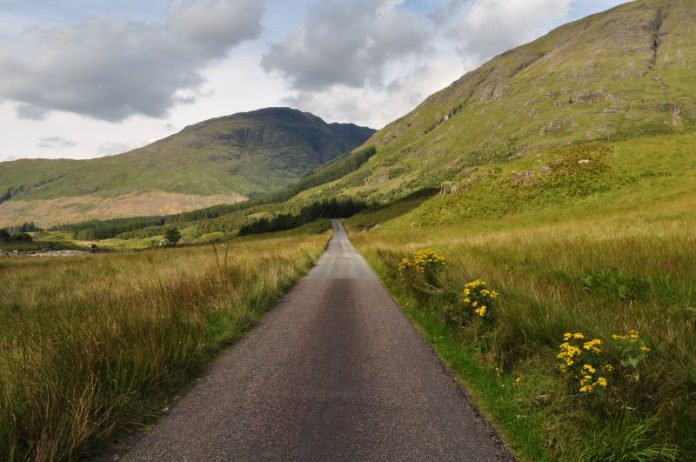The roads of Scotland are renowned for their rugged beauty and desolate beauty, much like the golf courses available like Old Course at St. Andrews, the Royal Dornoch Golf Club, The Gleneagles Hotel, and the Carnoustie Golf Links. From the rugged coastlines of the west to the rolling hills of the east, and you’ll need a good car for driving with ease. Of course. the best car for driving round Scotland will depend on the journey, terrain and purpose. With its diverse landscape, harsh weather and winding roads, selecting a car that is suitable for Scotland’s conditions is essential.
A well-equipped vehicle must be reliable and have the capability to tackle all kinds of terrain. Safety should also be a top priority when choosing a car for your trip. There are several considerations to consider when selecting an appropriate model such as size, engine power and fuel efficiency.
golfholidaysdirect.com/golf-breaks-in-scotland know a thing or two about golf breaks in Scotland, so gave us some advice on driving on Scottish highland roads.

Types Of Cars Suitable For Scotland
Scotland is an ideal driving destination, with its spectacular views, winding roads and challenging terrain. When selecting a car for a road trip through Scotland, it is important to take into account the type of vehicle that will be most suitable, and essentially has the boot space for your golf clubs.
An SUV or Hatchback is often the perfect option for navigating Scotland’s winding roads and off-road terrain. Estate cars and 4x4s are also great options for tackling the more challenging off-road sections of the trip.
For those looking for fuel efficiency and environmental friendliness, hybrid cars are an excellent choice as they combine traditional petrol engines with electric ones. Luxury cars may also be suitable if you’re looking for maximum comfort, while family cars offer plenty of space and practicality.
Smaller cars such as Crossovers are great for manoeuvring tight spaces and congested city streets. Ultimately, choosing the right car for your trip through Scotland depends on what type of terrain you plan to drive on, how many people will be travelling with you, and your budget.
No matter which type of car you select, it is essential to ensure that it is well maintained before embarking on your journey – this means checking tire pressure, oil levels, window wipers and brakes regularly. Additionally, make sure that all passengers wear their seat belts at all times when travelling in Scotland as it is essential to remain safe throughout your journey.

Safety Considerations
Safety is always a top priority. Features such as child safety seats, blind spot monitoring, hill descent control, electronic stability control, anti-lock brakes, traction control and driver assistance systems are essential for an enjoyable and safe experience.
Air bags provide an additional layer of protection in case of impact. Having emergency braking and parking sensors can help the driver to detect obstacles that might not be seen otherwise.
It is important to remember that no matter how safe a vehicle may be, it is still the responsibility of the driver to take all necessary precautions while operating a vehicle.
Drivers should always avoid distractions while behind the wheel and obey speed limits as well as other traffic laws. And push temptation aside and avoid alcoholic beverages in the golf club house, if you are not used to the road conditions then it’s best to be alert.
Climate Considerations
When driving in Scotland, climate considerations must be taken into account. Rainfall-resistance and wet-weather-driving capability are an absolute must when traversing the many roads of Scotland. Fog can set in fast, and snow-tires and cold-protection features are also essential for winter trips. Temperature variability is also a key factor since temperatures can plummet quickly in Scotland.
The best cars should have climate adaptability and fog-resistance to ensure safe passage through the region’s unique weather patterns. Wind resistance is also important due to the strong winds that often accompany rainstorms and other weather events. Finally, a car with superior climate protection will ensure a comfortable and safe journey throughout the country’s varied terrain and climates.

Comfort Considerations
You might be in the car a lot, so it’s worth considering comfort levels. Seat comfort, interior space, road noise, suspension type and air conditioning are all important factors. The ventilation system should be of good quality so that air circulation is sufficient.
A sound system with excellent sound quality is a must for long journeys and adjustable seats are also necessary for added comfort.
All-Terrain Performance Requirements
For a car to be suitable for driving around Scotland, it must have excellent all-terrain performance. Off-road capability is essential due to the rugged and challenging terrain of Scotland’s rural areas. A 4×4 vehicle is ideal as it can handle mud, snow, ice and hills with ease.
Use a car that can take on the rough terrain and remain reliable. It should be able to traverse in any weather condition, including heavy rain and snowfall. The car should also have a good suspension system to ensure a comfortable ride even when travelling over harsh off-road surfaces.
Road Conditions In Scotland
Driving in Scotland can be a thrilling experience. With its rugged roads, icy roads, single track roads, and windy roads, the region offers drivers the chance to see some of the most beautiful natural landscapes in the world.
The highland roads of Scotland are known for their spectacular views and challenging terrain. Country roads in rural areas are often steep and full of potholes. Coastal routes provide stunning panoramas but can be tricky to navigate due to their narrow lanes and sharp turns. Driving in Scotland is an adventure that requires skill and patience.
To make sure your trip is enjoyable and safe, it’s important to stay alert while driving on Scotland’s winding roads. Slow down when needed, avoid tailgating other cars, and take extra caution when encountering pedestrians or animals crossing the road. By following these simple tips you’ll ensure a smooth journey through Scotland’s stunning countryside!
Popular Car Models For Scotland’s Roads
Scotland is a country with varying road conditions, from paved motorways to rugged off-road terrains. To ensure a safe and enjoyable journey, selecting the right car model for Scotland’s roads is essential. Popular car models which work well in Scotland include 4x4s and station wagons which are designed to cope with off-road conditions. These vehicles are usually equipped with powerful engines and have plenty of ground clearance. Hatchbacks are also suitable for Scotland’s roads as they offer excellent fuel efficiency and manoeuvrability around tight corners. For those looking for more luxury, an SUV might be the ideal choice for travelling on Scotland’s roads. SUVs offer a combination of power and comfort, making them well suited to tackling the challenging terrain of Scotland’s countryside. Whether you’re looking for performance or luxury, there is a car model that can meet your needs when driving round Scotland.
Essential Equipment For Driving In Scotland
Snow chains, tow rope, first aid kit, spare tire, jumper cables, emergency triangle and waterproof clothing are all essential items to have in the car when travelling through Scotland’s changeable weather conditions. A snow shovel and fire extinguisher may also come in handy if the worst should happen.
The winter months of November-March can be particularly dangerous due to snowfall and ice so it is important to ensure that your vehicle is equipped with adequate snow chains or winter tyres before setting off on an adventure. It is also wise to carry a tow rope in case of any accidents or breakdowns on remote roads as there may not be any other cars nearby that can help you out.
Additionally, having a first aid kit and spare tire will provide peace of mind should either of these items become necessary. Jumper cables are also useful should the battery become drained in cold temperatures and an emergency triangle is essential for warning other drivers further down the road if you have broken down suddenly.
Lastly, waterproof clothing and shoes will keep you warm and dry during long drives through Scotland’s unpredictable weather system – no matter what season! Preparing for the worst will ensure a safe journey throughout this beautiful country.
Conclusion
The right car can make all the difference when driving around Scotland. It should be able to provide a comfortable ride while also meeting all necessary safety requirements. Climate considerations are also important as Scottish weather can vary greatly throughout the year, and even on the same day.






































